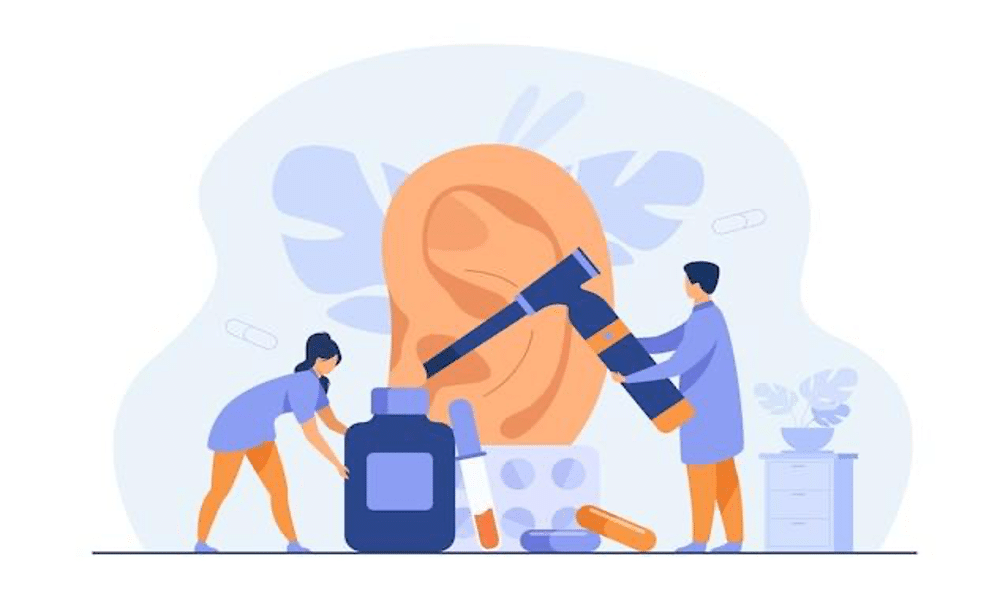Individuals with hearing loss used to have limited options for choosing hearing aids. Almost 30 million adults living in the U.S. have some degree of hearing loss, but only about one-fifth of them could benefit from hearing aid professional intervention. Using hearing aids helps reduce the frequency of decline, depression, and other severe adult health problems. Therefore, the FDA established a new category of over-the-counter (OTC) hearing aids.
FDA OTC and Traditional Hearing Aids
A traditional hearing aid is a medical device implanted behind the ear or placed through the ear canal to amplify sounds. This amplification allows the residual hearing of the individual with hearing loss to perceive frequencies and have some degree of hearing.
On the other hand, FDA OTC hearing aids are intended for people 18 years of age and older with mild to moderate hearing loss. Users can control the settings and customize the device according to their hearing loss needs through tools, tests, and software. FDA OTC hearing aid devices are available to patients without professional supervision, as they do not require involvement or prescriptions from licensed healthcare professionals.
Who Can Buy an OTC Hearing Aid?
If you are 18 or older and experiencing mild to moderate hearing loss, you can buy an OTC hearing aid in a store or online without seeing an ear-nose-throat (ENT) doctor or a licensed hearing healthcare professional (audiologist). However, please note that OTC hearing aids are only intended for perceived mild to moderate hearing loss and not for the treatment of severe or profound hearing loss. If you, a friend, or a family member suspect a more severe hearing loss, it is advisable to consult with a hearing healthcare professional, as FDA OTC hearing aids may not provide adequate benefit for such conditions. FDA OTC hearing aids have limitations in their maximum output and may not be sufficient for treating more profound hearing losses.

Differences between FDA OTC Hearing Aids and Traditional Ones
Understanding the differences between FDA OTC hearing aids and traditional hearing aids is crucial for individuals seeking appropriate solutions for their hearing needs. Here are the key distinctions.
1. Suitable Crowd
FDA OTC hearing aids are accessible to a broader consumer base. They are primarily intended for age 18 and older groups with mild to moderate hearing loss. This category of hearing aids aims to address the needs of individuals who may not have access to or prefer not to seek professional services from audiologists. FDA OTC hearing aids can be a viable option for those who have experienced age-related hearing loss or mild hearing difficulties and are looking for a more affordable and convenient solution.
Traditional hearing aids, on the other hand, cater to a wider range of hearing loss severities, including mild, moderate, severe, and profound. They offer a more comprehensive approach to hearing loss management. Traditional hearing aids are suitable for individuals who require more specialized care and precise fitting.
2. Accessibility and Affordability
Traditional hearing aids require tests to measure the extent of hearing loss, residual hearing, and ear measurements, and they are typically obtained through specialized clinics.
In contrast, FDA OTC hearing aids are more accessible and affordable. They significantly reduce costs by eliminating test expenses and professional audiologist visits. They can be purchased directly online or from retail stores.
3. Fitting and Personalization
FDA OTC hearing aids do not require fitting like traditional hearing aids. They are designed to be widely used and fit almost every ear. These devices can be personalized with various colors and user-friendly customizable settings. Their design resembles wireless earphones, making them discreet and unnoticeable.
The Best FDA OTC Hearing Aid
We recommend the Jinghao JH-A61A Rechargeable Digital OTC Hearing Aids.

The JH-A61A ITE Hearing Aid combines advanced technology with user-friendly features to enhance the hearing experience of individuals with hearing loss. With its unique in-ear detection, this hearing aid offers a seamless turn-on/off function without any annoying squeal, ensuring a hassle-free experience. Its comfortable fit makes it easy to wear for extended periods. Additionally, its quick 15-minute charge capability provides over 3 hours of continuous hearing, while the portable charging case allows for at least three additional recharges, ensuring uninterrupted usage wherever you go.
Conclusion
Jinghao stands out as a leading manufacturer of cutting-edge hearing aids. With its unwavering commitment to superior quality and exceptional customer care, Jinghao has established itself as a trusted name in the industry. Rediscover the joy of sound with Jinghao hearing aids.
